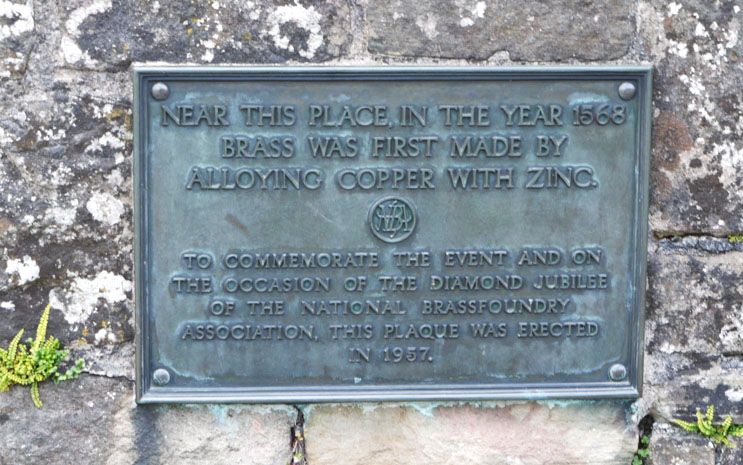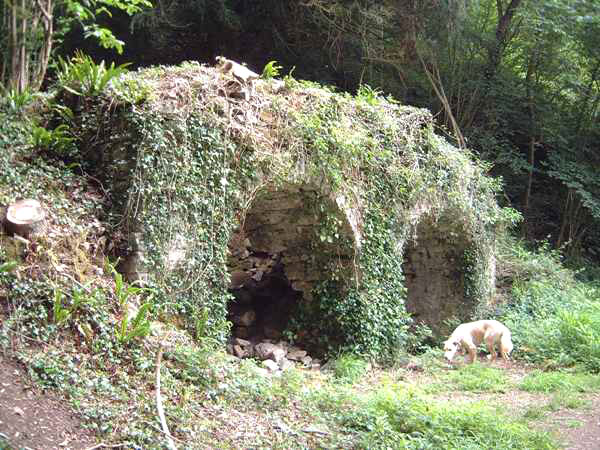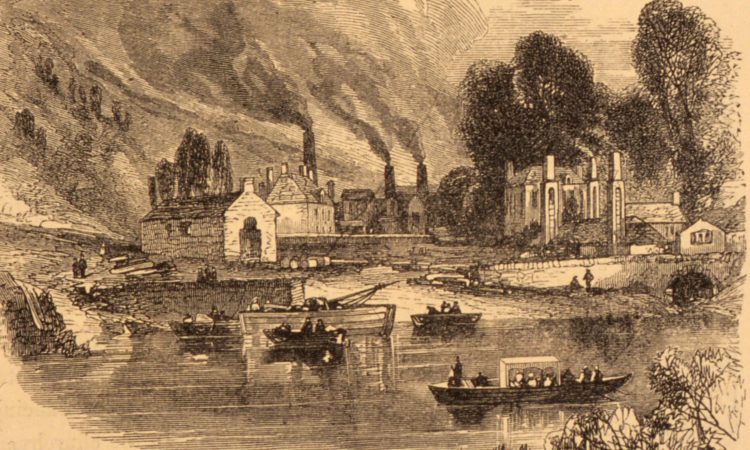- Stay
- What's On
- Things To Do
- Food & Drink
- Explore
- Inspiration
- Offers
- Weddings
- Blog
My Planner
- Stay
- What's On
- Things To Do
- Food & Drink
- Explore
- Inspiration
- Offers
- Weddings
- Blog
You are here: Explore > History & Heritage > Industrial Revolution
At a cursory glance, the lower Wye Valley reveals a tranquil landscape of woodland, pasture and meadows, a productive agricultural sector with modern industrial estates on the fringes of the market towns. Scratch the surface of this landscape, however, and an industrial heritage as remarkable as any area of Britain is revealed. It has left tantalising evidence that can be seen today in the most unexpected of locations the length and breadth of the lower Wye Valley area.
Iron has been made in the Wye Valley since Roman times, using the ready supply of timber, good quality ore and abundant charcoal from the Forest of Dean. The river provided transport for the raw materials and finished product, and with the introduction of the blast furnace in the 1500s, its tributaries began to be used for waterpower.
 The first brass made in Britain was founded at Tintern in 1566. Wiremaking quickly followed, with mills situated on all the tributaries of the Lower Wye - the Angiddy, Whitebrook, Redbrook, Lydbrook and Bishopswood. The area resounded to the noise and smoke of heavy industry for the next 400 years and gave rise to many pioneering industries – none of which is evident today. The Lower Wye Valley can genuinely claim to be the birthplace of the Industrial Revolution.
The first brass made in Britain was founded at Tintern in 1566. Wiremaking quickly followed, with mills situated on all the tributaries of the Lower Wye - the Angiddy, Whitebrook, Redbrook, Lydbrook and Bishopswood. The area resounded to the noise and smoke of heavy industry for the next 400 years and gave rise to many pioneering industries – none of which is evident today. The Lower Wye Valley can genuinely claim to be the birthplace of the Industrial Revolution.
The second half of the 16th century saw significant industrial development in the lower Wye Valley. Wireworks were founded at Tintern in the 1560s and at Whitebrook around 1606. Many forges and mills were established in the 17th and 18th centuries, using the waterpower of the narrow, side valleys - notably the Lydbrook, Angiddy, Redbrook, Whitebrook and Valley Brooks.
In the 18th and 19th centuries, Whitebrook became famous for paper milling, when wallpaper became a fashionable way to decorate houses. In a BBC documentary entitled ‘Great British Journeys’, Nicholas Crane said of the Whitebrook Valley ‘I find it almost impossible to imagine in this enchanted woodland, that this was once one of the cradles of the Industrial Revolution.’
Copper works were established at Redbrook by 1691. By 1700 some 42 furnaces processed nearly 1000 tons of imported ore per year. A furnace in Redbrook used coke for smelting iron ore (from the Forest of Dean) as early as 1716, one of the first in the world so to do.
Redbrook’s copper industry failed when major works were built at Swansea, but the village rose, phoenix-like, to become, by the 1790s, one of the world’s major tinplate manufacturing centres. This industry survived until the 1960s and was renowned for producing the thinnest, highest quality plate in the world.
The Lydbrook Valley was a thriving centre for various metal industries, benefiting from the tramroad from the Forest of Dean. Many furnaces and foundries came and went. Most were gone by the 1960s, although the valley retains a distinctly industrial atmosphere, now lost in Redbrook or Tintern, and is a fascinating place to linger. The Lydbrook Cable Works was the main supplier of telegraph cables for use on the Western Front in the Great War.
 Lime production was another important industry in the area. It was carried out on some scale in support of the local agricultural economy in the later 18th and earlier 19th centuries. Lime kilns and small quarries, exploiting narrow beds of limestone, were often sited in remote rural locations. Remnants of the kilns can be found throughout the Valley in villages such as Penallt and Lancaut.
Lime production was another important industry in the area. It was carried out on some scale in support of the local agricultural economy in the later 18th and earlier 19th centuries. Lime kilns and small quarries, exploiting narrow beds of limestone, were often sited in remote rural locations. Remnants of the kilns can be found throughout the Valley in villages such as Penallt and Lancaut.
Industry was flourishing in the Wye Valley at the end of the 18th century. Gilpin, writing in 1792, describes the ‘life and bustle’ of the quayside at Lydbrook, the ‘thick smoke’ of the iron forges and, within half a mile of Tintern, the ‘great iron works, which introduce noise and bustle into these regions of tranquillity.’ These were an essential component of the popular ‘Wye Tour'.
However, as the 19th century progressed, the Valley’s industries gradually declined and management of the woodlands lessened when there was no longer a ready market for their products.
To explore the industrial heritage of the Wye Valley walk the Offa's Dyke Path or Wye Valley Walk which pass through many of these villages and towns or try to Angidy Trail, a 5 mile circular walk into the Angidy Valley from Tintern. You can find out more and download the PDF here.

With thanks to the Wye Valley AONB, if you would like to read more see their website here.
©Visit Dean Wye 2025. All Rights Reserved.
*Visit Dean Wye is the trading name of Forest of Dean & Wye Valley Tourism Limited.








